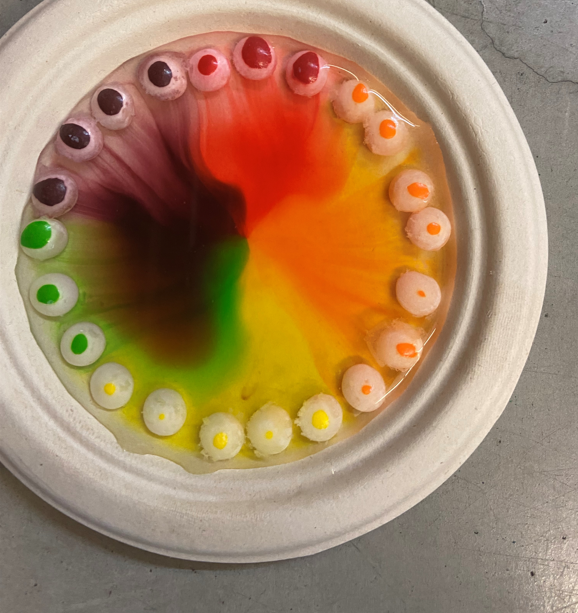Hyla Stories
From skittles to Mendelian genetics

HIGH SCHOOL BIOLOGY:
Students in Biology are continuing to add detail to their investigation of organelle structure and function, starting with the cell’s plasma membrane. Through exploring the topic of diffusion, or the tendency of molecules to move from regions of higher concentration to areas of lower concentration, students could explain both the presence of passive and active transport proteins in the plasma membrane and their function of moving solutes in and out of the cell. (Photo: Visualization of diffusion with a simple Skittles experiment.)
Moving within the cell, students are elucidating how different organelles work together to carry out the necessary functions of the eukaryotic cell. As a way to understand this collaboration between organelles, we looked at the cellular machinery used to first synthesize (or make) proteins from DNA and then transport those proteins both within and out of the cell. After visualizing the possible routes a protein travels after it is created, we further magnified the process of gene expression, the pathway by which DNA is transcribed to mRNA, and mRNA translated to protein. To fully grasp the mechanics of transcription and translation, students took a DNA sequence through gene expression to produce a unique sequence of amino acids (the building blocks of proteins). Knowledge of this level of detail empowers students to then discover for themselves both HOW and WHY mutations in the sequence of DNA alter the expressed protein.
Looking forward, students will continue with the theme of genetics to dive deeper into processes of mitosis and cell division. These topics will both add more depth to the function of the cytoskeleton (a previously studied organelle) and build new understanding of how the compact structure of chromosomes allows for safe storage and efficient transmission of genetic material to the next generation. With a clear understanding of the cell cycle, students will next study a similar process called meiosis, which results in the creation of two genetically unique gametes, each containing a different version (or allele) of the same genes. This paramount cellular process gives students the foundation to explain the source of genetic variation among individuals, and then zoom in further to explore Mendelian genetics and its numerous real-world applications.
